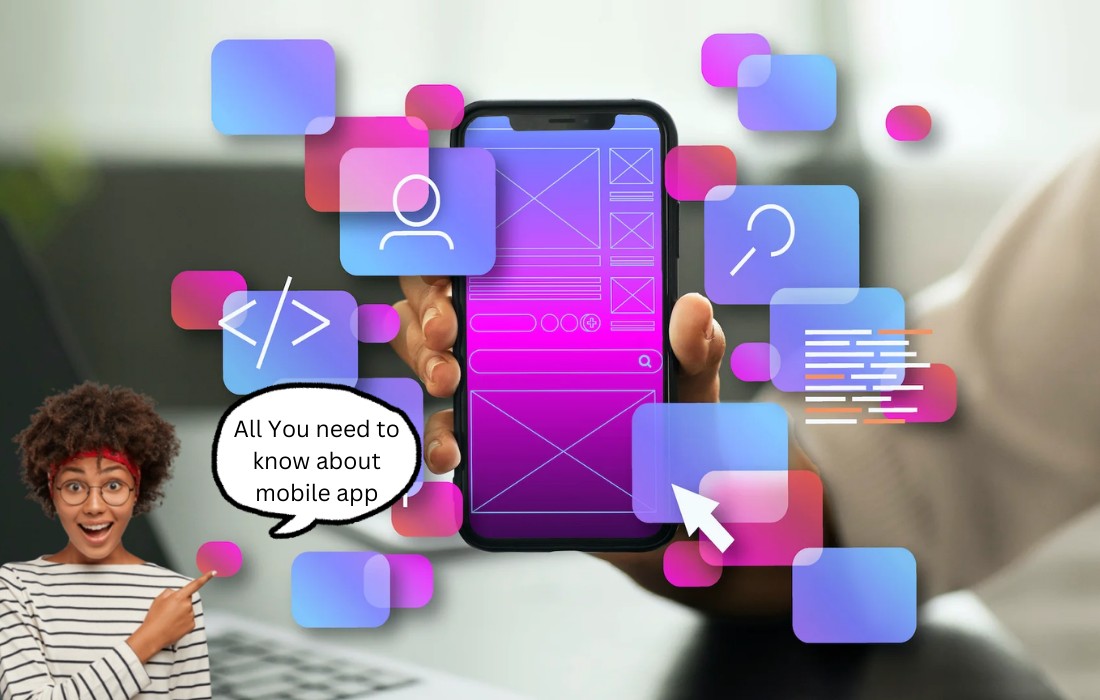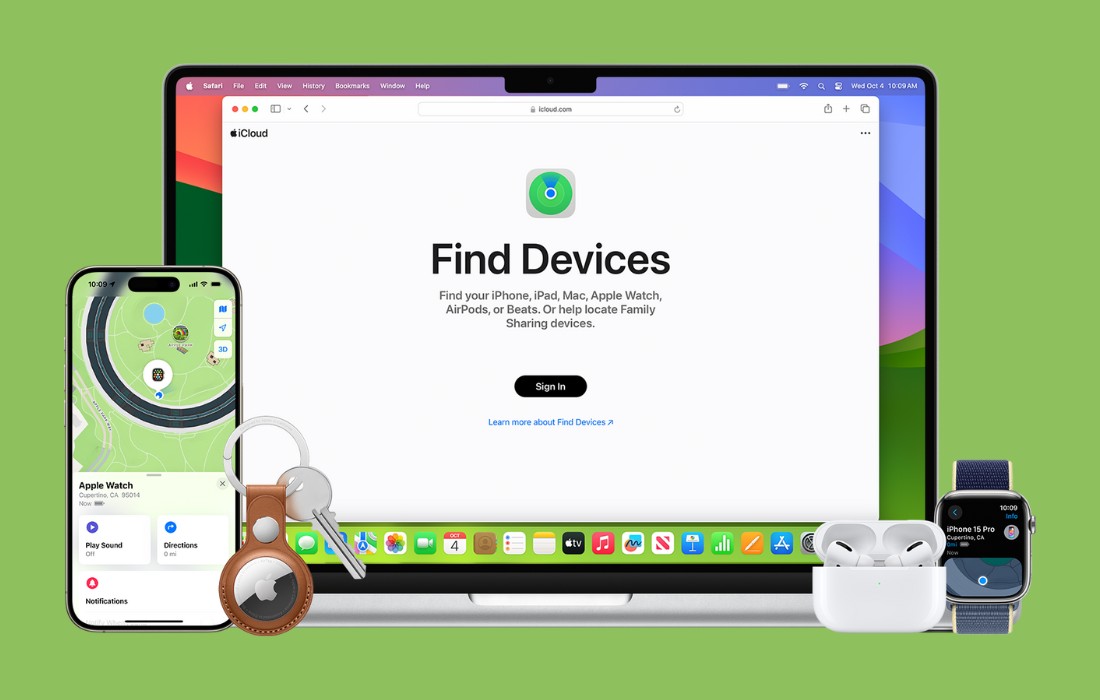It’s almost time once again for the tech world to stop everything else it’s doing and pay attention as a major company shows off its latest hardware. Next up is Google’s turn at bat. Thanks to a string of leaks and Google’s own teases, we already have a pretty clear idea of what the company has planned for its Made by Google hardware event. The show will take place Tuesday, August 13 at 1PM ET.

We’ll get the official reveal of the Pixel 9 lineup, for one thing. This includes what the company is calling the Google Pixel 9 Pro Fold, which is certainly more of a mouthful than “Pixel Fold 2.” In addition, Google will certainly reveal more details about Android 15 and the operating system’s public rollout. Expect to hear the word “Gemini” a lot too as Google is likely to focus on the AI-powered features of the new handsets. Some accessories could be in store in the form of Pixel Buds Pro 2 and a new Pixel Watch (or two) as well.
Here’s how to watch Google launch Pixel 9 phones and the other assorted devices at the Made by Google event. Engadget will be live blogging it as well (look for the link here early on Tuesday morning).
In the meantime, this is what we know for certain Google will show off at the event and everything else we expect to learn about at Made by Google:
Pixel 9, 9 Pro and 9 Pro XL
As usual, the main event of Made by Google will be the Pixel 9 lineup. Google has confirmed (as if it were ever really in doubt) that it will show off new smartphones at the event, but it’s expected to have three traditional models this year instead of two.
The Pixel 9 and 9 Pro will be straight-up successors to the Pixel 8 and 8 Pro. Leaks and rumors suggest Google will be adding a Pixel 9 Pro XL, with a larger screen than the other two models, to the lineup as well. YouTuber Andro-news claims to have gotten their hands on an engineering sample of the larger handset, which has flat edges, polished metal on the sides and matte-textured glass on the rear. However, the phone isn’t switched on in the video.
The Pixel 9 Pro is slated to have more advanced specs than the Pixel 9 but with the same display size. The Pixel 9 Pro XL, meanwhile, is expected to have almost the same specs as the 9 Pro but in a bigger handset. Per Tom’s Guide, the 9 and 9 Pro displays will measure around 6.3 inches while the Pixel 9 Pro XL may have a whopping 6.9-inch screen.
All three of the phones are expected to have a redesigned camera module. This large camera bar (which Google has confirmed at least for the Pixel 9 Pro) looks like it protrudes quite a bit from the main body. Unless you pick up an appropriate case, you can probably expect this to snag on your pocket more often than you’d like. The Pixel 9 is believed to have 50MP wide and 48MP ultrawide lenses in its camera array.
Google is likely to employ a new chipset this year, which will probably be called the Tensor G4. Leaks have also suggested that the base Pixel 9 will come with 12GB of RAM and 128GB of storage. The two larger phones are expected to max out at 512GB of storage. One other expected addition this year is the introduction of emergency satellite messaging, a feature that Apple has supported on the last two generations of iPhones.
Pixel 9 Pro Fold
Google will be hoping that consumers find the design of its latest foldable phone more elegant than its name. “Pixel 9 Pro Fold” doesn’t roll off the tongue as easily as “Pixel Fold 2.” However, the change does make sense if Google is looking to more clearly position the foldable as a premium product with the inclusion of “Pro” in the name. If the foldable has the same chipset as the rest of the Pixel 9 lineup, the name change is even more logical.
It’s not rare for phone manufacturers to go with a major redesign on their second (or even third) stab at a new form factor as they learn more about what works and what doesn’t. Like its more rigid siblings, the 9 Pro Fold also has a noticeable camera bump albeit one that positions the lenses vertically. Leaked images from a regulator in Taiwan indicate that the selfie camera has been moved on the interior screen to support a wider field of view. It appears that Google has reduced the fold crease this time around too.
Android 15 and Gemini
As ever, Google has been gradually announcing Android 15 features over the last several months, in large part to help developers update their apps ahead of the operating system’s public rollout. Along with security measures such as Theft Detection Lock and Google Play fraud prevention, it should come as little surprise that Google is weaving AI more tightly into the fabric of its mobile OS.
The Made by Google teasers have made it very clear that the company is focusing heavily on the AI features of its new devices, such as the ability to draft a letter or email based on a prompt. Google confirmed back at I/O that Gemini will be more deeply integrated into Android 15 (which perhaps could spell the demise of Google Assistant) and will have better contextual awareness of what you’re doing. For instance, you’ll be able to ask the chatbot questions about a YouTube video you’re watching and it should be able to answer them. You might think of it as a modern, interactive version of Pop-Up Video.
We should get a release date for Android 15 — at least for supported Pixel devices — at the event. It’ll be around the same time Google starts shipping the new Pixel lineup, most likely later in August.
Pixel Watch 3
It’s just as well Google doesn’t build ships considering how many leaks it has to deal with. A couple of weeks ahead of Made by Google, Android Headlines got its hands on the specs of the Pixel Watch 3, which is expected to be available in two sizes: 41mm and 45mm.
The Pixel Watch 3 will likely have an Actua display capable of delivering up to 2,000 nits of brightness — that’s twice as bright as the previous model’s AMOLED display. Per the leak, Google claims that a battery saver mode extends the time between charges to up to 36 hours, though you’ll get up to 24 hours of standard use out of the wearable when the always-on display is enabled. The smaller model is expected to offer 20 percent faster charging compared with the previous model as well.
It had been anticipated that Google would name the larger model the Pixel Watch 3 XL. However, that’s no longer expected to be the case, according to Android Headlines. Each variant will have its size listed in parentheses to differentiate them, the publication says.
Pixel Buds Pro 2
It’s been two years since Google released the Pixel Buds Pro, so those are very much due for an upgrade. Rumors suggest the Pixel Buds Pro 2 will debut at Made By Google. Some unofficial renders have popped up, indicating that along with the existing Charcoal and Porcelain colorways, there will be Aloe and Hot Pink variants to match various Pixel phone options. It appears that Google is bringing back a version of the wingtip design from the original Pixel Buds too.
It remains to be seen what Google is cooking up for the audio side of the Pixel Buds Pro 2 but we do have at least some sense of the price. Rumors suggest the Pixel Buds Pro 2 will cost
Everything else
In all honesty, that’s about everything we’re expecting to see at Made by Google. It had been anticipated that the company would unveil the latest Nest Learning Thermostat and a new streaming box at the event, but Google actually revealed those a week ahead of the main showcase.
The fourth-gen Nest Learning Thermostat has a 60 percent larger LCD display than the previous model with the ability to have customizable faces. It’ll be available on August 20 in three colors: silver, black and gold. It costs $280 and comes with one wireless temperature sensor.
As for the Google TV Streamer, that will run you $100 and it’ll be available next month. While that’s twice as expensive as the Chromecast with Google TV dongle, the company has upgraded the specs with a faster GPU, 4GB RAM instead of 2GB and four times the storage at 32GB. There’s support for HDR, Dolby Vision, Dolby Atmos and spatial audio (via Google Pixel Buds) too. What’s more, the Google TV Streamer is designed to be a smart home hub. There’s Matter support and a Google Home panel through which you can control smart bulbs and view live video from connected doorbells and security cameras.
Those are at least reasonably compelling devices, so it seems a little odd that Google wouldn’t want to give them more of a spotlight by instead unveiling them at its splashy August 13 event. It stands to reason then that Google wants the event to be primarily about smartphones, smartwatches and earbuds. That does make sense as those are the most likely going to be the most successful hardware categories for the company over the all-important holiday period. Still, there’s always space for at least one surprise (bring back Stadia, you cowards).
It’s Google’s turn to hold a major hardware event, albeit a little earlier than usual this year. The Made by Google 2024 showcase will take place at 1PM ET on August 13. You can stream it live on the Made by Google YouTube channel or simply watch above. We already have a good idea of what the company will reveal. We’ll also have full, in-depth coverage of everything announced at the Google Pixel 9 launch event right here on Engadget.
Google has already confirmed that it will show off the latest lineup of Pixel smartphones. We’re expecting to see four models, including the Pixel 9, Pixel 9 Pro and Pixel 9 XL, which will have a prominent camera bar on the rear. Google is also rebranding its latest foldable. Rather than being dubbed the Pixel Fold 2, the device is called the Pixel 9 Pro Fold. The Gemini AI assistant will be baked deeply into all of these phones as Google aims to boost your productivity and make photo editing much easier.
Elsewhere, rumors suggest that Google will announce the Pixel Watch 3, which is expected to be available in two sizes. It’s likely that we’ll see the Pixel Buds 2 as well.
Given that Google revealed a new TV streaming box and Nest Learning Thermostat a week before the event, it seems that the company wants to keep the focus on Pixel devices. That said, there’s always the chance of a genuine surprise or two. For what it’s worth, an “after party” event will start at 2:30PM ET.
The Pixel Fold was Google’s first phone with a flexible display when it launched last year. And at its upcoming Made By Google event, we’re about to get a successor in the Pixel 9 Pro Fold. So there’s no better time to check in on how Google’s original bendy handset has survived being my daily driver for an entire year.
The Pixel Fold doesn’t look like any other foldable on the market. It has a curvy polished aluminum frame with squatty dimensions that results in something shaped more like a passport than a traditional handset or Samsung’s long and skinny batons. When you open it up, you’ll find relatively chunky bezels and a big main display that sits in landscape orientation instead of portrait like practically all of its rivals. Around back, there’s an absolutely massive camera bar. But as I found out after talking to the phone’s designers, the opportunity to shape Google’s first foldable gave the team a blank slate to try new approaches. And I think the phone is much better off for it.

That’s because even though its widescreen setup sometimes causes issues with apps and websites that expect portrait mode, it made sitting down with a movie much faster and more enjoyable. Meanwhile, its thick frame left enough room for Google to build a selfie camera into the phone’s bezel rather than taking up room on its main display. And even though its rear camera module is definitely bulky, it allowed Google to equip the Fold with sensors that are basically as good as those on a standard flagship Pixel (including a 5x optical zoom). That’s something Samsung still hasn’t managed to do for the Z Fold line, which continues to take a backseat in photo quality compared to an equivalent Galaxy S Ultra.
Granted, Samsung’s version still boasts a few features the Pixel Fold doesn’t get such as native stylus support and Dex mode, which offers a superior layout for multitasking. Plus, thanks to Qualcomm’s Snapdragon chips, it delivers slightly faster overall performance. However, I think Google largely makes up for that with better software including apps like the Pixel Recorder, Call Screener and Live Translate.

All in all, despite being Google’s first foray into the category, the Pixel Fold is a very compelling device with a unique design, class-leading cameras and great displays — that’s pretty much everything you want in a big fancy flexible phone. That said, one thing I couldn’t properly evaluate in my original review was the phone’s long-term durability. To close the loop, here’s how it’s faring one year later.
Before we get in too deep, I should note that I’m pretty tough on devices. The Pixel Fold I’ve been using has been naked since the day I got it, simply because I don’t like cases. After all, companies like Google spend millions coming up with exquisite designs, so it seems like a shame to throw a cheap smock over everything. I also live with a toddler who doesn’t care about nice things, so he doesn’t think twice about batting the phone around when it’s in his way. But even so, the Pixel Fold has held up surprisingly well.

On its frame, there are a ton of scuffs and scratches all over along with some dents from being dropped. There are also a few scapes on its matte Gorilla Glass Victus back, but all of this is purely cosmetic. If you’re the type of person who gets jazzed up about wear and patinas on vintage furniture, you might even say the Pixel Fold is aging rather gracefully considering how much abuse it’s absorbed. Most importantly though, none of this damage has impacted the phone’s functionality.
That said, there is a small crack in the phone’s exterior display. But I want to be clear, that one is 100 percent my fault. While trying to potty train my toddler, I would often sit on a low stool near him in a bathroom with hard tile flooring. And often, because of how I was seated, the phone would slip out of my pocket. This happened countless times and I should have simply put the phone on a nearby changing table. But I didn’t, and about a month ago, it fell and hit the corner of its display, causing a small cobweb of fractures. Still, even with that blemish, the screen’s functionality is unaffected.
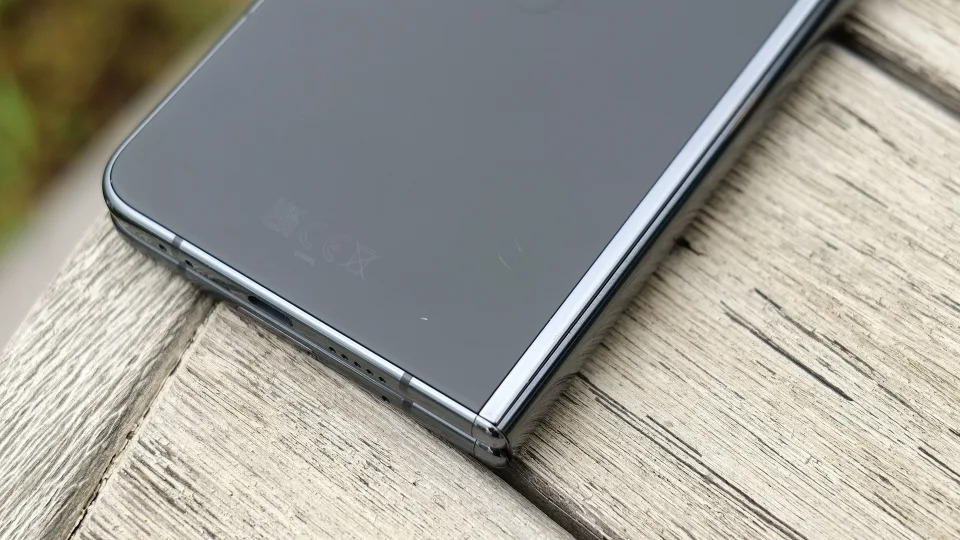
Naturally, I tried to get the exterior display repaired. Unfortunately, a representative at my local uBreakiFix (which is a Google-authorized repair center) told me that they didn’t have the required parts or the proper jig for a panel replacement. I was then told to contact one of the company’s main locations in Kearny, NJ, which did have the necessary materials and gave me a rough estimate (over the phone) of about four hours and
I’ve also dropped this thing in the sand, which scared the crap out of me since its IPX8 rating technically only specifies its level of water resistance (up to 5 feet for 30 minutes). Things got even more concerning when I tried to open it and was greeted by the distinctive sound of particles grinding somewhere inside. But after wiping it off and blowing in the hinge like it was an old NES cartridge, everything went back to normal. Perhaps the most impressive thing is that even after a year, there’s not a single hint of bubbling from the Fold’s factory-installed screen protector, which is something I’ve experienced on every one of Samsung’s Z Fold phones I’ve owned. And based on the searches I’ve done online, aside from a small handful of odd cases, I haven’t seen many complaints from other Pixel Fold users either.

In a lot of ways, the Pixel Fold’s impressive durability is yet another sign that Google has been carefully watching the evolution of rivals like the Z Fold and studying it to see what aspects can be improved. Despite being the company’s first go at a phone with a flexible screen, the Pixel Fold definitely doesn’t suffer from a lot of the issues you typically get on first-gen devices. The one thing I might do differently in the future is to perhaps use a sleeve instead of a case to make the device a bit less slippery when it’s in my pocket.
My one gripe with the Pixel Fold’s design is that it never fully opens all the way. Granted, this is an incredibly minor complaint, but it looks awkward when the phone stops at 179 degrees, just short of being totally flat. During my initial review, I thought the phone’s hinge might relax over time, but it’s just as stiff as ever, which in all other situations is a good thing.

Regardless, for a type of device that many think needs to be treated with kid gloves, the Pixel Fold has proven that it’s a lot tougher than I thought. And while it seems Google has some significant design changes in store for the next model, I’m quite satisfied with what I’ve experienced thus far.

Google worked with Meta to roll out ads that targeted young teens even if it’s against the former’s rules, according to the Financial Times. Based on the documents seen by the publication, Google worked on a marketing project designed to advertise Instagram to YouTube users within the 13- to 17-year-old age range. Google had blocked age-based ad targeting for users under 18 years ago, but the company reportedly found and used a loophole.
Since they couldn’t go for the demographic they wanted to reach, they instead targeted a group of users Google had labeled as “unknown.” Google’s staff proposed the group to Meta, The Times said, because the company had data points to prove that a large number of users under the label are below 18 years in age. The company even reportedly told Meta that the daily engagement it gets from 13- to 17-year-old users exceeds TikTok’s and Instagram’s. The Information says using this loophole is against Google’s rules, as well, since it has policies against proxy targeting.
Meta and Google worked with media agency Spark Foundry to launch the marketing program in Canada between February and April, according to the report. When it did well, they kicked off a trial in the US in May and had made plans to expand it to other regions, as well as to include other Meta apps in the campaign.
However, Google had investigated and ultimately cancelled the project after being contacted by the Times. “We prohibit ads being personalized to people under-18, period,” the company told the publication. It said that its safeguards worked properly in this case because it didn’t directly target registered YouTube users know to be 18. That said, it didn’t outright deny using the loophole and only said that it will take “additional action to reinforce with sales representatives that they must not help advertisers or agencies run campaigns” that attempt to work around its policies.

This Anker 3-in-1 MagSafe charging station is on sale for $88, which is a discount of 20 percent. That’s actually a record low price for the popular charging apparatus. It’s also been built primarily to suit Apple devices.
The big hook here is the “3-in-1” from the name. The Anker MagSafe can simultaneously charge an iPhone, Apple Watch and a pair of AirPods. That’s just about everything a modern Apple fan could need, aside from a gigantic harness to accommodate the Vision Pro.
This particular charger made our list of the best Apple Watch accessories, and with good reason. It’s a MagSafe device, so it offers Qi2 wireless charging. This means that devices juice up by just laying on the charging station. It also means that it circumvents the recent switch to USB-C with iPhones. As long as you have an iPhone 12 or above, you’re good to go.
It works with every Apple Watch model, though you need a wireless charging case for AirPods. The AirPods Pro earbuds ship with one but standard AirPods do not. Other than that caveat, this is a solid device. We enjoyed the high-speed 15W charging and the nifty folding design, which makes it easy to pack.

Intel has unveiled a discrete GPU for cars, the Arc A760A, designed to bring the “triple-A gaming experience” from home over to your car, the company announced. No automotive partners were revealed, but vehicles with the new chips will go on sale as soon as 2025.
With car buyers increasingly focused on in-vehicle entertainment above all else, the chips are designed to “unlock a new era of AI-powered cockpit experiences,” according to Intel’s press release.
The GPUs will allow voice, camera and gesture recognition to make it easy to control up to “seven high-definition screens rendering 3D graphics and six-in vehicle cameras and interactive features.” At the same time, it can supposedly run demanding triple-A gaming titles, in-vehicle entertainment and AI-powered productivity apps.
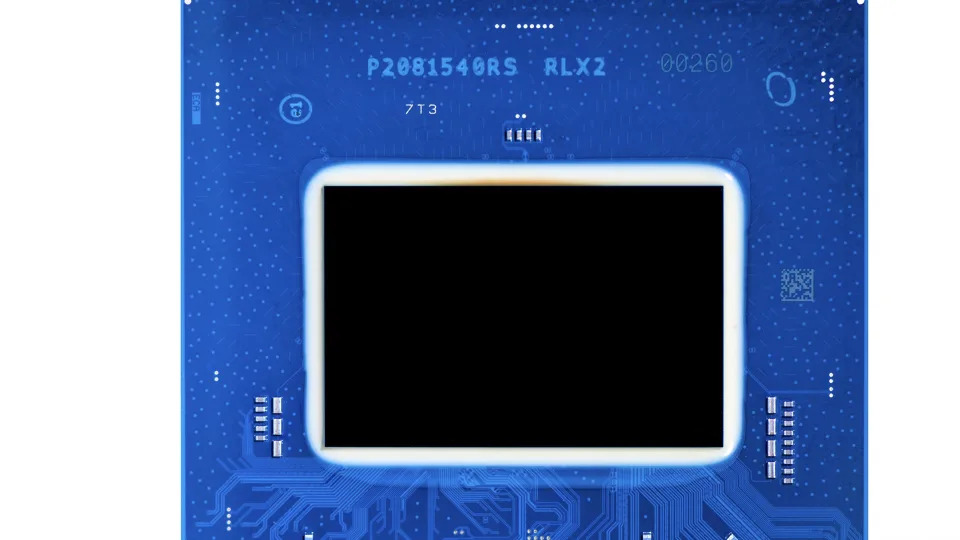
The system will also be highly personalized to the driver. It’ll include the ability to “execute complex vehicle control commands through natural language processing, answer vehicle-related questions accurately, and even engage in leisurely chat with users, providing a more interactive and enjoyable journey,” according to Intel.
Intel added that it has created over 500 features and AI apps for automobiles, with over 100 independent software vendors working on in-vehicle experiences. In addition, the A760A will be fully compatible with software developed for its iGPU PC platform, while scaling from entry- and mid-tier vehicles up to higher-end cars.
Intel said it wants to be the “go-to partner for automakers.” It’s clearly looking to diversify its offerings in the wake of quality-control problems with recent PC chips and financial woes that may see it lay off up to 15,000 employees.








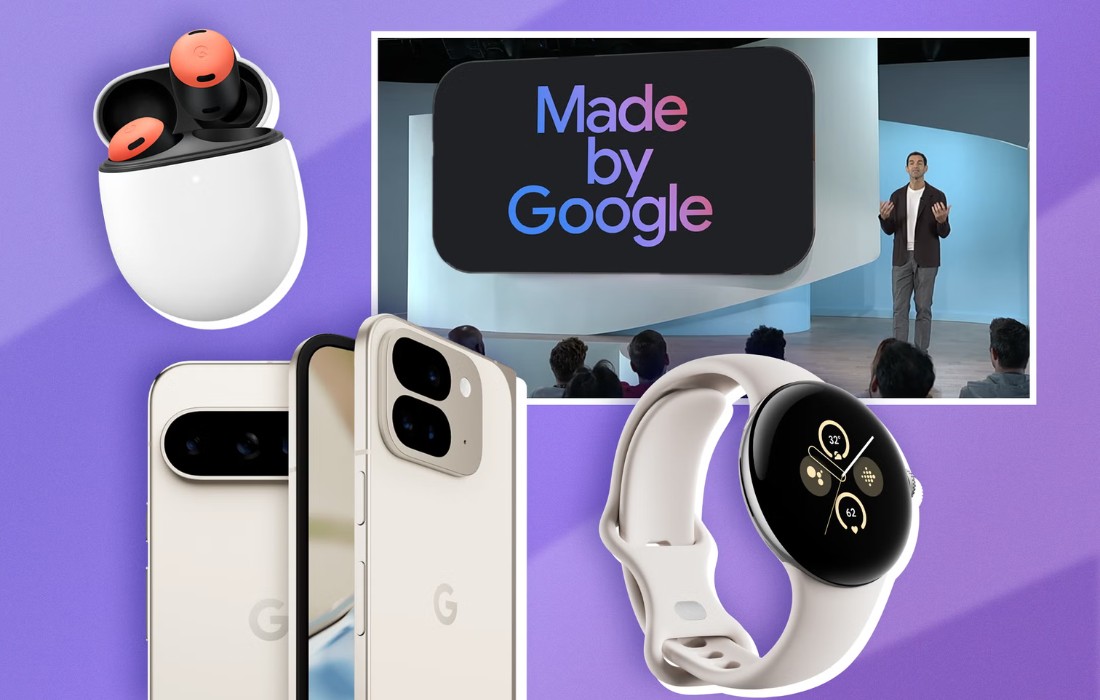
 GoogleFinally, it’s here. Google’s big hardware press event kicks off later today, and it looks to be an almost entirely Pixel-based affair, with more phones than ever.First, the Pixel 9 and 9 Pro will be straight-up successors to the Pixel 8 and 8 Pro. Rumors suggest Google will also introduce a Pixel 9 Pro XL, with a larger screen. We’re expecting all three phones to have a redesigned substantial camera module — the Pixel 9 is believed to have 50MP wide and 48MP ultrawide lenses — and Google may introduce a new chipset too, probably called the Tensor G4. Oh, and expect a new foldable to break cover too, with a ‘Pro’ moniker, but will it be even pricier this year?Expect to hear more about Gemini, Google’s AI-powered assistant, and Android 15. The company has already said Gemini will be more deeply integrated into its next iteration of Android (goodbye, Google Assistant?) and will have better contextual awareness. We’re intrigued to see what shape all of that will take.We predict Google will unveil a next-gen smartwatch and wireless buds, too. But to make sure, you can watch and read along with our liveblog or follow the Made By Google YouTube channel—or both!We should also have hands-on impressions of everything Google lets us get our grubby paws on. The event kicks off today at 1PM ET.— Mat SmithThe biggest stories you might have missedPatreon will have to use Apple’s in-app purchase system or be removed from the App StoreElon Musk claims ‘massive DDOS attack’ delayed his live stream with Donald TrumpTaskmaster VR doesn’t quite deliver on the promise of the TV showYou can get these reports delivered daily direct to your inbox. Subscribe right here!The Google Pixel Fold, one year laterMore durable than expectedEngadgetOn the eve of seeing its replacement (probably), how has Google’s first foldable fared? Our die-hard foldables expert, Sam Rutherford, made the Pixel Fold his main phone for the last year, and for added jeopardy, he doesn’t use a case. It’s not been an issue: It has myriad scuffs and scratches, some dents from being dropped and a few scrapes on its matte Gorilla Glass Victus back, but all of this is purely cosmetic. While he ended up fixing a cracked external screen due to multiple drops on a tile flooring, the bigger (foldable!) display has remained undamaged. The Pixel Fold is a lot tougher than we thought it would be.Continue reading.Valve’s new game doesn’t exist, but has racked up 16K concurrent playersTeam shooter Deadlock is racing up the charts.Valve’s next game, not yet officially announced, had 16,000-plus concurrent players over the weekend. We know it’s called Deadlock and that Valve was working on it for a while, so this is a soft launch of some kind. Reportedly in development since 2018, the game is a competitive MOBA shooter, billed as “the next Dota” by veteran Valve reporter Tyler McVicker.The big question: Where’s my invite to play?Continue reading.
GoogleFinally, it’s here. Google’s big hardware press event kicks off later today, and it looks to be an almost entirely Pixel-based affair, with more phones than ever.First, the Pixel 9 and 9 Pro will be straight-up successors to the Pixel 8 and 8 Pro. Rumors suggest Google will also introduce a Pixel 9 Pro XL, with a larger screen. We’re expecting all three phones to have a redesigned substantial camera module — the Pixel 9 is believed to have 50MP wide and 48MP ultrawide lenses — and Google may introduce a new chipset too, probably called the Tensor G4. Oh, and expect a new foldable to break cover too, with a ‘Pro’ moniker, but will it be even pricier this year?Expect to hear more about Gemini, Google’s AI-powered assistant, and Android 15. The company has already said Gemini will be more deeply integrated into its next iteration of Android (goodbye, Google Assistant?) and will have better contextual awareness. We’re intrigued to see what shape all of that will take.We predict Google will unveil a next-gen smartwatch and wireless buds, too. But to make sure, you can watch and read along with our liveblog or follow the Made By Google YouTube channel—or both!We should also have hands-on impressions of everything Google lets us get our grubby paws on. The event kicks off today at 1PM ET.— Mat SmithThe biggest stories you might have missedPatreon will have to use Apple’s in-app purchase system or be removed from the App StoreElon Musk claims ‘massive DDOS attack’ delayed his live stream with Donald TrumpTaskmaster VR doesn’t quite deliver on the promise of the TV showYou can get these reports delivered daily direct to your inbox. Subscribe right here!The Google Pixel Fold, one year laterMore durable than expectedEngadgetOn the eve of seeing its replacement (probably), how has Google’s first foldable fared? Our die-hard foldables expert, Sam Rutherford, made the Pixel Fold his main phone for the last year, and for added jeopardy, he doesn’t use a case. It’s not been an issue: It has myriad scuffs and scratches, some dents from being dropped and a few scrapes on its matte Gorilla Glass Victus back, but all of this is purely cosmetic. While he ended up fixing a cracked external screen due to multiple drops on a tile flooring, the bigger (foldable!) display has remained undamaged. The Pixel Fold is a lot tougher than we thought it would be.Continue reading.Valve’s new game doesn’t exist, but has racked up 16K concurrent playersTeam shooter Deadlock is racing up the charts.Valve’s next game, not yet officially announced, had 16,000-plus concurrent players over the weekend. We know it’s called Deadlock and that Valve was working on it for a while, so this is a soft launch of some kind. Reportedly in development since 2018, the game is a competitive MOBA shooter, billed as “the next Dota” by veteran Valve reporter Tyler McVicker.The big question: Where’s my invite to play?Continue reading.
 Despite having a fragile flexible screen, the Pixel Fold proved itself to be more durable than expected. (Photo by Sam Rutherford/Engadget)
Despite having a fragile flexible screen, the Pixel Fold proved itself to be more durable than expected. (Photo by Sam Rutherford/Engadget)

